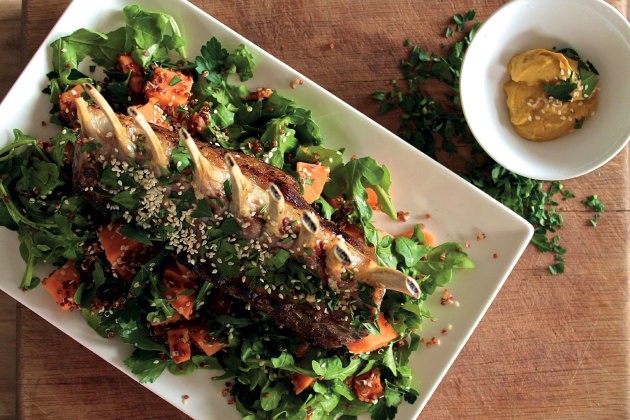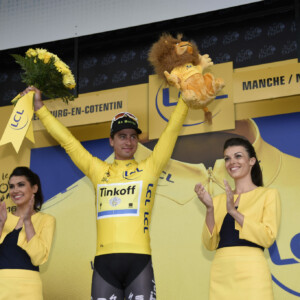There is no shortage of weight loss diets – low carb, high protein, low fat, low calorie plans that promise you the body of your dreams. Unfortunately, deep down we all know that despite the ever increasing number of diets and commercial weight loss programs, sustainable weight loss eventually comes down to developing strong food and lifestyle habits that you can maintain for life. Most importantly for athletes, optimal weight loss also means preserving muscle mass, which means we need to be a little bit more specific when it comes to losing fat, not just weight.
Focus on vegetables
If you do not eat 1-2 cups of vegetables or salad at lunch and another 2-3 cups with your dinner, you are not eating the volume of low calorie, nutrient dense plant based food in your diet to be at your best. Not only are vegetables important for their key nutrients, but their low calorie content means that you can literally eat vegetables and salad to your heart’s content without worrying about weight gain. Perhaps more importantly when it comes to weight control, vegetables and salad keep you full so you are far less likely to snack throughout the day. Increase your veggie intake by simply adding mushrooms, tomato or spinach to your breakfast, enjoy vegetable juices, always eat a salad or soup with your lunch and aim for half of your dinner plate to be filled with salad or vegetables no matter where you are eating.
Remember the golden rule
If there was just one golden rule of nutrition, it would have to be to always eat carbohydrate-rich food with protein-rich food. Combining these in your food choices ensures that your blood glucose and energy levels are kept well-regulated throughout the day. Teaming carbs with protein also helps to preserve muscle mass and regulate insulin levels, which helps to control appetite and keep you full. Low GI, slowly digested carbs including grain based breads and crackers, oat or bran based cereal or wholegrains are the best choices, as are lean proteins including reduced fat dairy, lean meat and fish and nuts and legumes. Examples of meals and snacks that fit this carb and protein combo include lower carb grain toast with eggs for breakfast, cheese and wholegrain crackers as a snack and a salad with tuna and beans for lunch.
Bump up the protein at breakfast
Protein is a super nutrient when it comes to weight loss, as it is digested more slowly than carbs and hence helps to keep the hormonal systems that control our appetite and fat burning hormones well regulated. Aiming to consume 15-20g of protein at breakfast via a couple of eggs, a protein shake, some baked beans or some thick natural yogurt will help to kick start metabolic rate for the day, and keep us full and satisfied for at least 3-4 hours so that we are less tempted by high fat treats and snacks throughout the morning.
Watch the coffee
There is nothing wrong with enjoying a cup or two of espresso each day; it may even help you to burn fat. However, if you regularly sit down to numerous large milk based lattes or cappuccinos you may be consuming far too many liquid calories. The body does not compensate well when we consume liquid calories, which means they simply becomes extras that we do not need. For this reason, always order a small if you want milk-based coffee and try and limit yourself to just one or two coffees each day. Piccolo serves are a good option as you get half the milk with the same serve of coffee or better still, swap to black tea or coffee to reduce your calorie intake from milk.
Always carry a protein rich snack with you
Usually we know what we should be eating but we find ourselves hungry without any nutritious options available. Get into the habit of always carrying a protein-rich snack with you, whether it is a protein or nut bar, some prepackaged cheese and crackers or some roasted chic nuts or broad beans and you will find that you are never forced to eat a high carb, high calorie muffin or cake simply because you were hungry and that was all you could find.
Be strict with your eating times
The funny thing about weight control is that the time at which we eat can be more important than the type of food. Busy training schedules, work and family life can mean that breakfast is not eaten until after 9am, lunch is pushed back to 2 or 3pm and you are lucky if dinner is on the table by 9pm. Our bodies are programmed according to the circadian or 24-hour rhythm and our hormones work to burn food during the day, and store at night. This means the more calories we eat during the second half of the day, the more likely they will be stored. For this reason, always aim to eat a pre-training snack before an early morning session, your breakfast by 8am, lunch by 1pm and, where possible, dinner by 8pm to give your body 10-12 hours without food overnight.
Go light at night
For the vast majority of us, we eat so many calories during the day that we really do not need a heavy meal at night. During the week, when your meals are under your own control, focus on lean protein teamed with plenty of vegetables for your dinner choices. Active young people or athletes may require heavy pasta, noodle and rice based dishes but for most of us who spend far more time sitting than we should, ‘go light at night’ is a perfect dinner mantra and will not compromise training or recovery as long as you consume a carbohydrate based snack within an hour of finishing any late afternoon session.
Take a meal off
There is nothing wrong with enjoying a meal out. Socialising and enjoying good food can be great but it depends on how often you do it. With the average meal eaten away from home containing at least 200-300 more calories than a meal from home, try to limit eating heavy meals out to just once or twice a week.
Cut out the sugars
Adding sugar to your tea or coffee and choosing breakfast cereals with dried fruit and flavoured yoghurts will continually bring extra sugar to your diet. This can increase insulin levels over time, which is related to weight gain and increased risk of Type 2 diabetes. Control your sugar intake by enjoying just 2-3 pieces of fresh fruit each day and eliminate added sugar from your diet where possible. As a general rule of thumb, >10g total sugar per serve of food is high.
Change things around
If you only have 5-10kg to lose, chances are you are relatively fit and healthy, but it may also be time to change your training and food intake to give the body a shakeup. The body gets used to exercising in a certain way, just as it quickly gets used to eating a certain way. For this reason, altering the type and amount of training is often all you need to do to kick-start fat burning when things have been stable. The same can be said for your food regime – try eating your largest meal at a different time each day or if you snack regularly, swap to 3-4 meals each day. Any change is good when it comes to optimising metabolism and boosting fat loss.

Sweet Potato Lamb
gluten-free dairy-free egg-free wheat-free
Serves 4 – per serve: 300 cals | 13g fat | 23g protein | 20g carbs | 5g fibre
Ingredients:
8 racks lamb, frenched. (Can be individual cutlets if
preferred)
2 cloves garlic, crushed
2 medium sized sweet potatoes, cubed
1 cup cooked red quinoa
2 cup rocket leaves
4 tbsp. sesame seeds, toasted
Zest and juice from 1 lemon
2 tbsp. red wine vinegar
1/4 bunch of parsley leaves, chopped finely
2 tbsp. Dijon mustard
Salt & pepper to garnish, if desired
Preparation Method:
1. Heat the oven to 180° and a pan over a medium-high
heat. Coat the lamb rack in the crushed garlic and sear in
the pan before roasting in the oven for 10 minutes (If the
cutlets are already individual, cook for 2 minutes less). Set
aside to rest.
2. Meanwhile steam the sweet potato and combine with the
quinoa, rocket, sesame seeds, lemon zest and juice, red
wine vinegar and parsley.
3. Divide the salad among plates and serve with 2 cutlets
and 1/2 a tbsp. of Dijon mustard


